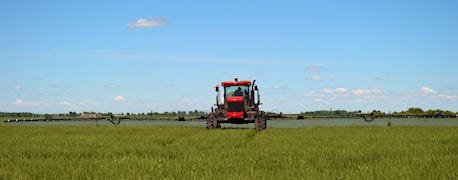May 13, 2014

On Friday, the Fusarium Head Blight assessment website suggested a low risk of head blight, commonly called wheat scab in the Northeast. But crop conditions and wheat growth stages can change quickly with the warm weather of recent days.
Check for updates at http://www.wheatscab.psu.edu. With warm, wet weather, most wheat will move quickly to the Feekes 10 stage and flowering, notes Nathan Kleczewski, University of Delaware Extension specialist. At that stage, foliar diseases tend to be low on the canopy in most fields and at low severity levels.

READY TO BREAK BOOT: With this week's warm up, many wheat fields will start flowering.
Can fungicides suppress scab?
Anyone planning to use a recommended fungicide for scab suppression (Prosaro, Caramba or Proline) needs to understand that these fungicides won't result in control of scab similar to the controls of rusts and powdery mildew, cautions Kleczewski. Due to variability with developmental stage of tillers and other factors, one can expect – at best – around 42 to 45% reduction in vomitoxin or DON, a De-Oxy-Nivalenol toxin produced by Fusarium and Aspergillus strains
DON is what really matters with fusarium head blight. And use of these fungicides doesn't guarantee that your wheat's DON levels will fall below the 2ppm dockage threshold. Levels exceeding 2ppm will be docked or downgraded to feed. Levels above 10 ppm can be rejected.
The majority of FHB outbreaks are mild to moderate, meaning DON levels will be well under the 10 ppm threshold, he adds. Perhaps 20% of the time, a field could have an exceptionally high DON, for example 30 ppm or above. "In such cases, the best-case fungicide scenario would not reduce DON to a satisfactory level."
The best approach, says Kleczewski, is to start with a good, moderately resistant variety. Then a scab fungicide can reduce DON by roughly 75%. That'll put you in a much more favorable position if FHB levels spike in your area.
You May Also Like




